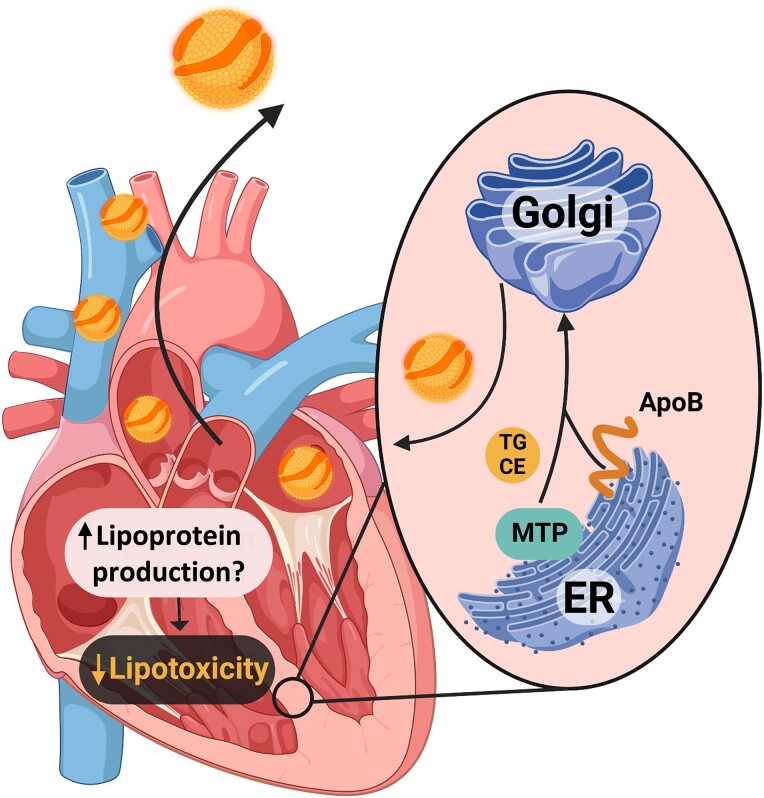Figure 4.
Cardiac lipoprotein production. The heart has the capacity to alleviate its burden of excess toxic lipids by oxidation, storage in lipid droplets, or secretion in lipoproteins. Akin to the liver and the intestine, the heart expresses both apolipoprotein B (ApoB) and microsomal triglyceride (TG) transfer protein (MTTP). This allows the packaging of intracellular cholesterol ester and TG in the endoplasmic reticulum into nascent lipoproteins. The nascent lipoprotein is then released into the bloodstream; cardiac lipotoxicity is reduced by this ‘reverse lipid transport’ process.

